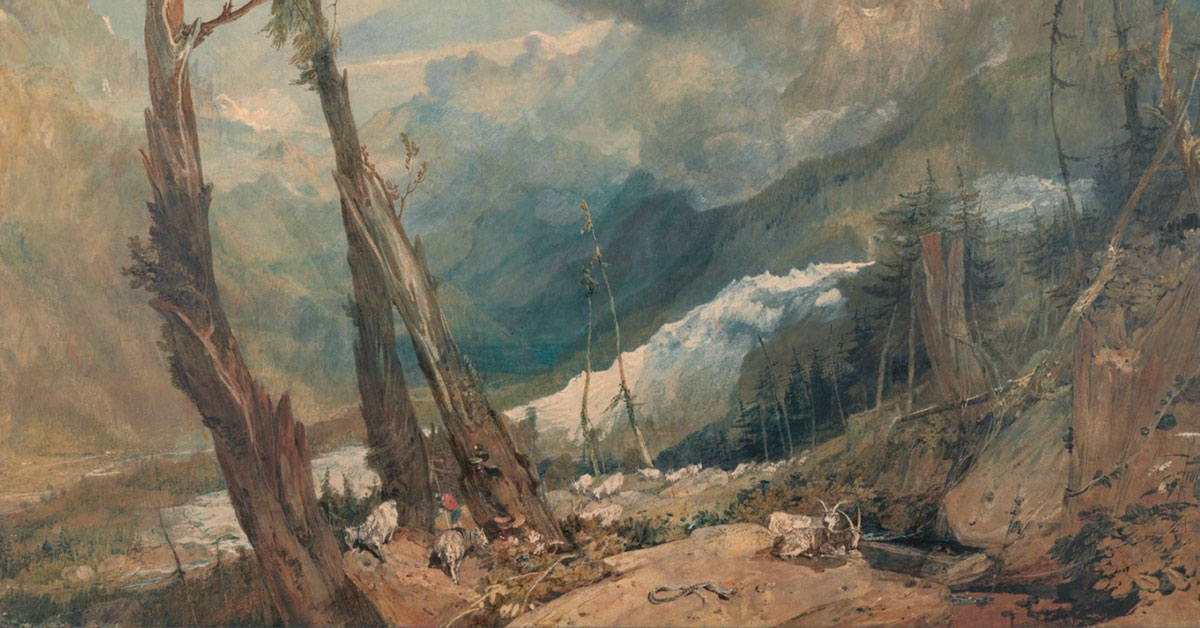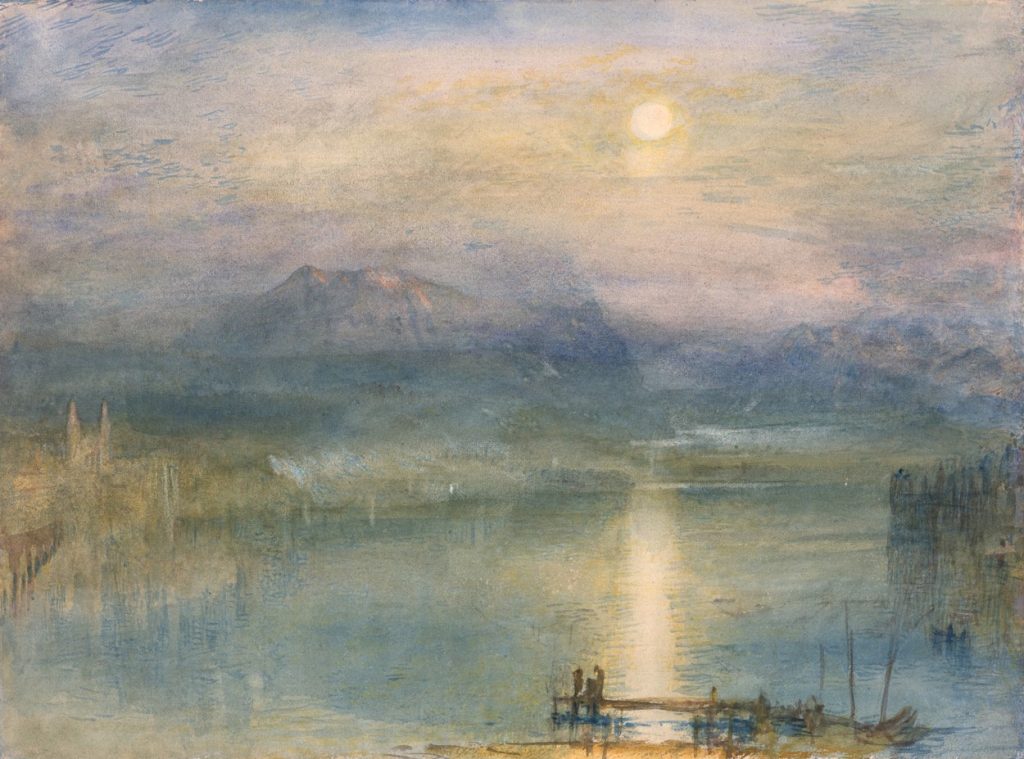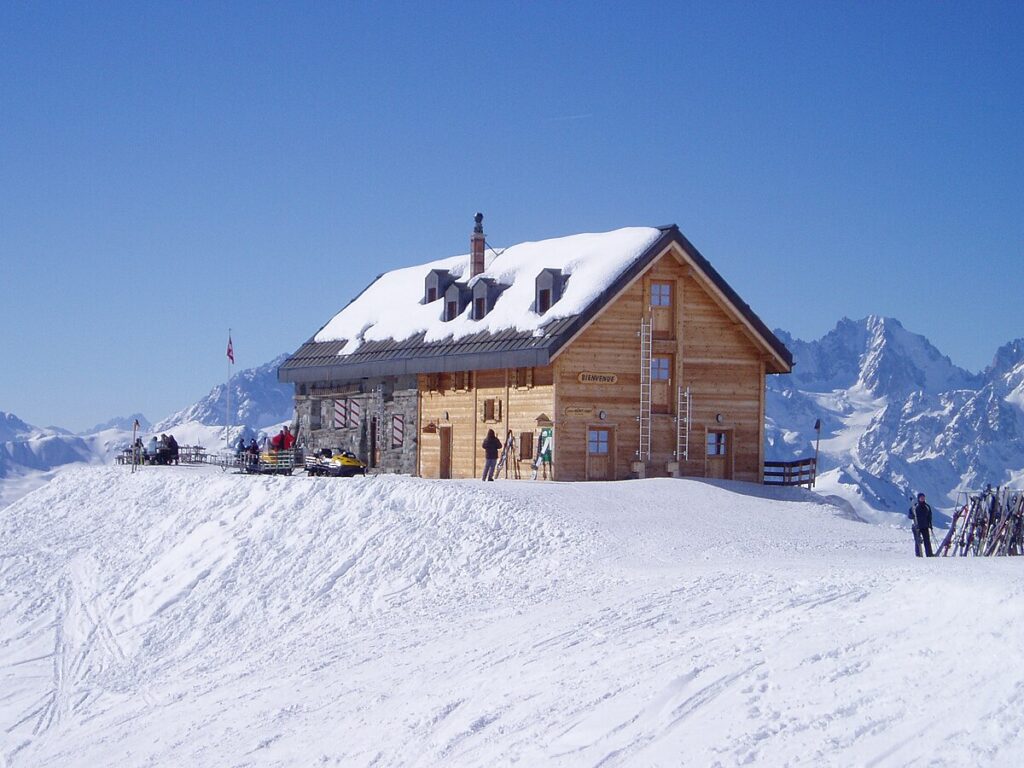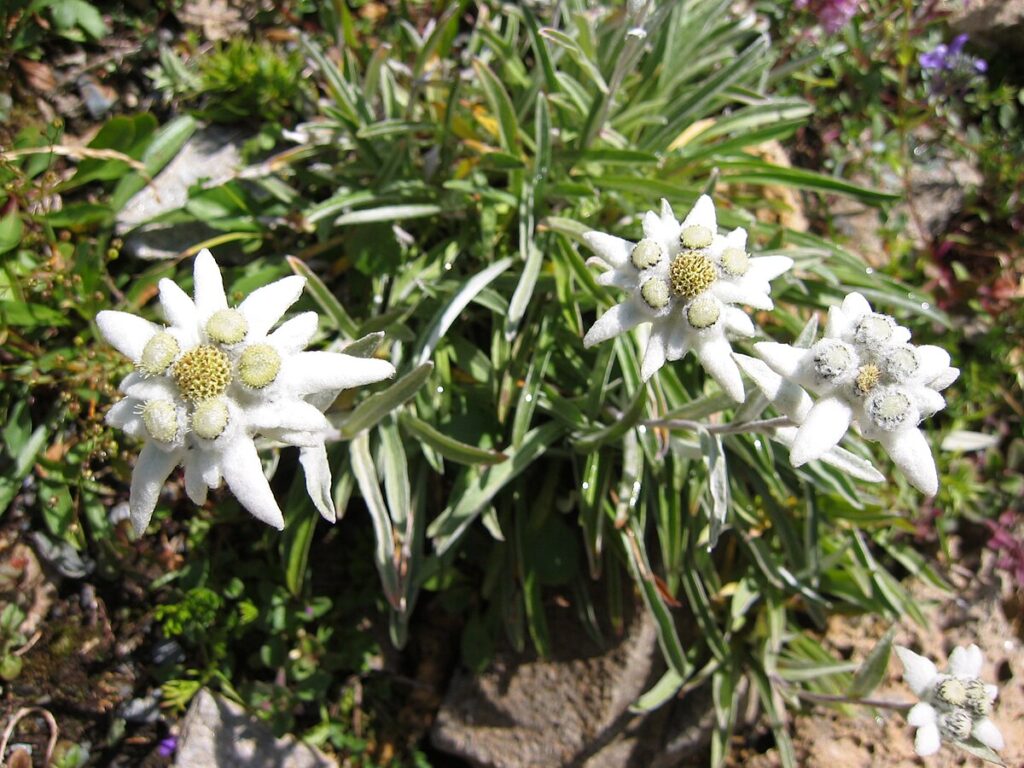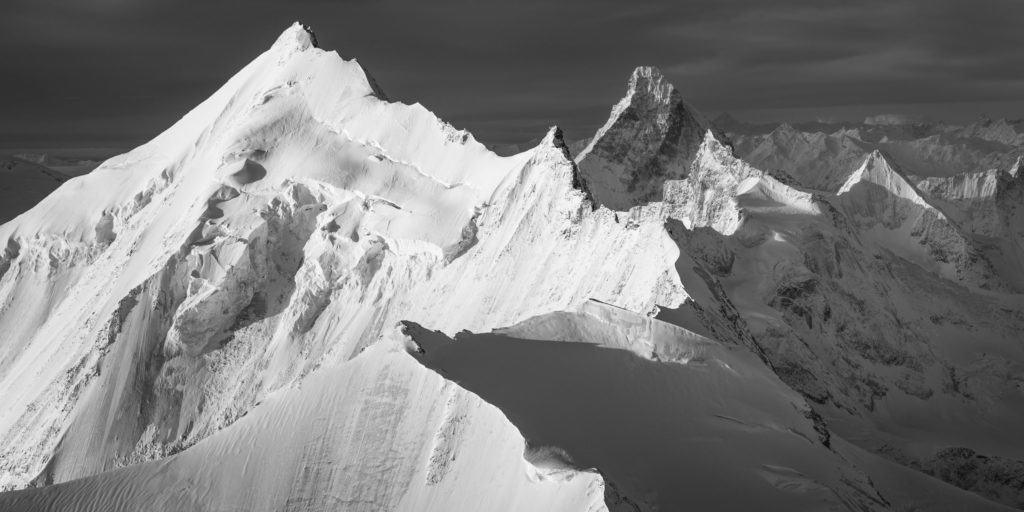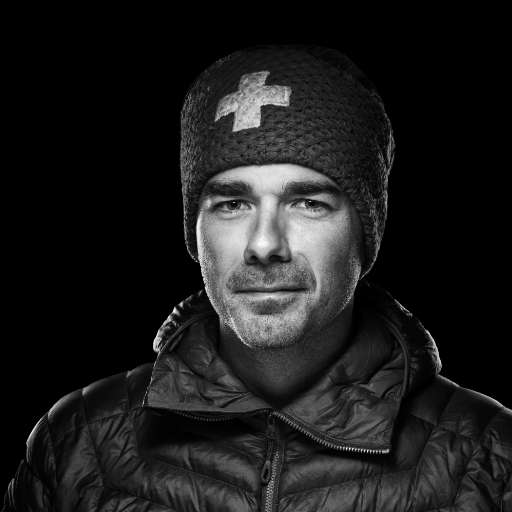Joseph Mallord William Turner (1775-1851) is undoubtedly the most famous English painter of the 18th century. Many exhibitions are still dedicated to him today. He is known as one of the main painters of the aesthetic of the sublime and for his great talent, especially in watercolor. Although the line is forced, he is also considered the precursor of impressionism, and even of abstract art.
Turner's first trip to Switzerland
Turner came from a modest background: his father was a barber. He was spotted very young: he entered the Royal Academy of Painting at the age of 14, a very early age. Turner discovered the mountains during a trip to Wales in 1798. This new environment led him to seek new techniques and a new style, adapted to this environment that he was visiting for the first time. The discovery of the Alps in 1802 gave Turner the opportunity to continue his stylistic explorations. It was probably Walter Ramsden Hawkesworth Fawkes, a landowner and political reformer, who encouraged Turner to visit Switzerland. Fawkes purchased twenty watercolors and two oil paintings from Turner as a result of this trip. Turner knew of Switzerland through the watercolors of his countryman John Robert Cozens, which he had copied in the 1790s for Hugh Andrew Johnstone Munro of Novar, an aristocrat, art collector, and one of Turner's first patrons.
His 1802 trip is emblematic of the destinations that were crystallizing at that time: Grande Chartreuse, Geneva, Savoy and Mont Blanc, Bonhomme and Seigne passes, Courmayeur and Aosta, Grand Saint Bernard, lower Valais, canton of Vaud with Lake Geneva, Bern andOberland, Lake Lucerne, return to the Gothard.
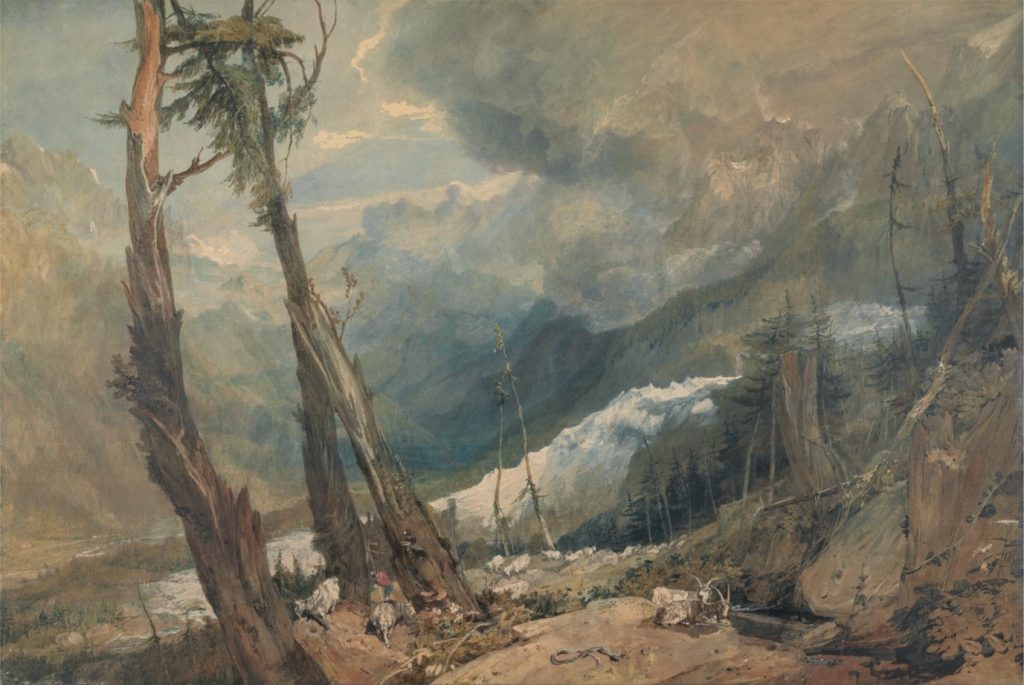
Turner's travels in Switzerland
did not offer material for a theme Turner loved: that of the grandeur, decadence and fall of empires. In 1836, he was traveling with Munro, who reports that the painter did not use color in his studies until he was in Switzerland, suggesting that Turner was saving his pigments for Switzerland, probably the purpose of this trip.
Turner traveled to Switzerland again in 1841, 1842, 1843 and 1844. He did not keep a diary and so his travels in Switzerland have been reconstructed based on his drawings and watercolors. His interest in the Alps did not wane over time and led him to explore many different places, within the limits of accessibility at the time. He crossed the St. Gotthard Pass several times, visited Grindelwald twice, as well as the Grisons and the region of Chamonix. The Alpine region that interested him most and that he visited on every trip was Lucerne and its surroundings, Lake Lucerne. Apart from Martigny and Sion, he did not visit the Valais and never went to Zermatt, even though tourism began to develop there between the end of the 1830s and the beginning of the 1840s.
Turner processes
Turner made many watercolor studies on the spot in notebooks, which he called memoranda. These are often very quick studies, consisting of only a few pencil strokes. Turner did not apply watercolor on the spot, but in the evening at the hotel. He did not do this every day, however, which explains why many studies have the same colors. Although Turner painted both in oil and watercolor - a medium much appreciated by the English - he favored the latter in Switzerland. Avalanche in Graubünden is one of the few works with a Swiss subject that is painted in oil. The theme of catastrophe, on the other hand, is frequently found in Turner's work, including in Switzerland. Goldau, which has as its subject the landslide in Goldau in 1806, is another example.

Sublime
Turner is a painter of the aesthetic of the sublime. The sublime is characterized by a feeling of "delicious horror": it is the fear caused by something immeasurable escaping the man who finds himself in security and enjoys this fear somewhere. Switzerland and its mountains offer an ideal environment to translate this feeling: man is sent back to his smallness. Let's take the example of the Devil's Bridge in the Schöllenen gorge near Andermatt. Turner does not leave any foreground where the viewer can virtually land and exaggerates the topography of the site - already reputed to be one of the wildest and most arid at the time -, an exaggeration that is particularly visible in the height of the bridge and of the rock faces.

Hannibal crossing the Alps
Turner was also a painter of history, as with Hannibal crossing the Alps, representing the famous crossing of the Alps by the Carthaginian general and his army on their march to Rome. A storm is raging, a tribe of the Alps is attacking the rear of the army, Hannibal himself is not visible: the promise of the plains of Italy seems far away. Even the sun seems very weak. This painting, highlighting man's vulnerability to nature, is charged with a moral message in this period of Napoleonic wars (the painting dates from 1810): Turner takes the opposite view of David and his Bonaparte crossing the Great St. Bernard, where the emperor is represented triumphant.
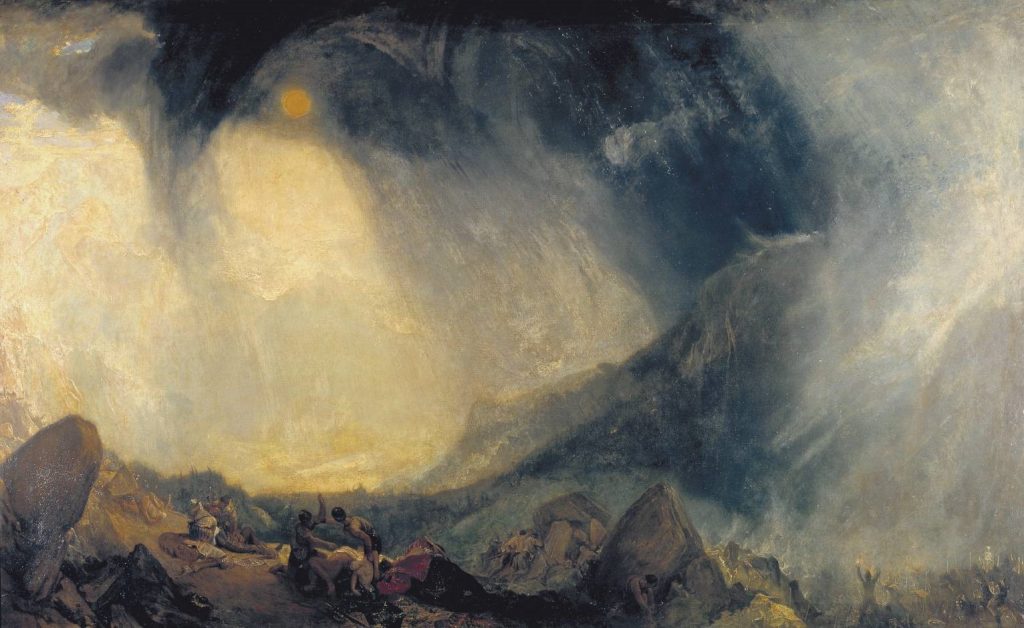
Change of style and new watercolors in the 1840s
After his 1841 trip to Switzerland and the Alps, Turner brought back in his bags watercolors of a new kind, very different from the watercolors with continental subjects: they are no longer studies intended for sale as on previous trips, but watercolors halfway between simple memoranda and finished works. These studies are slightly larger than A4 size. Turner exhibited them in his private gallery in London, where he had his regular clients come. From these sheets, they could choose the final watercolor, which Turner would then paint. The success was less than expected: it is probable that the buyers were disturbed by Turner's attempts to render the monumental character of the landscape through the air, a novelty difficult to understand at the time. Thus, as in 1802, Switzerland once again led Turner to evolve his style and practice to paint the characteristic landscapes of that country.
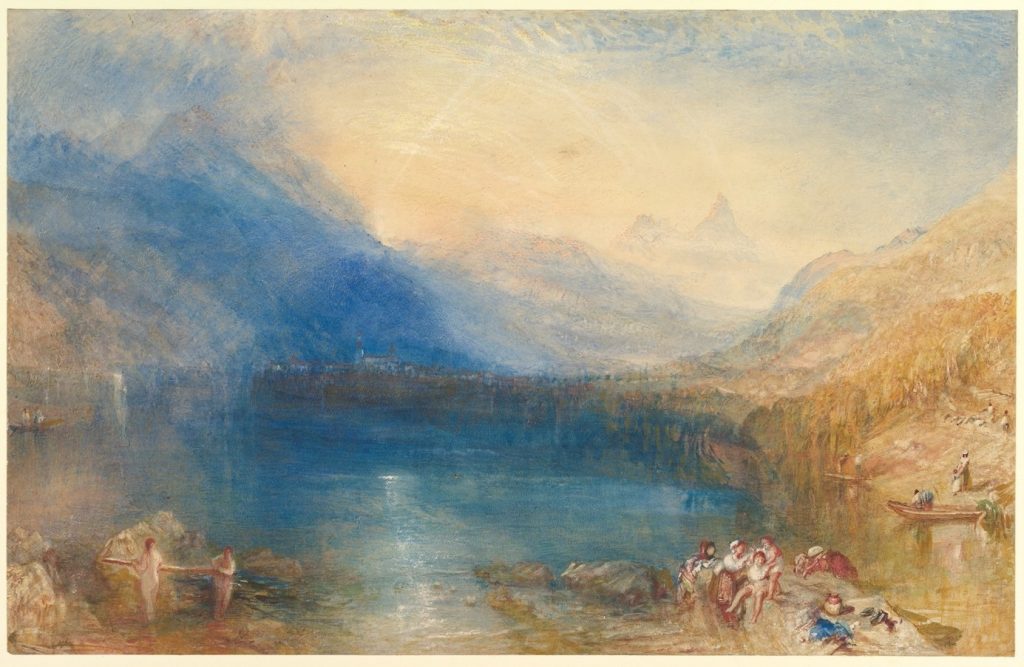
Lucerne and the Rigi
Turner came to Switzerland every year between 1841 and 1844. He stayed regularly in Lucerne and always rented the same hotel room, overlooking the lake and the Rigi. Turner was fascinated by this mountain and produced numerous studies and watercolors of it, at different times of the day and under different light effects. An unfinished oil painting in the Tate Britain in London probably depicts the sunset from summit . The watercolors of Lake Lucerne and the Rigi are among Turner's finest works.
